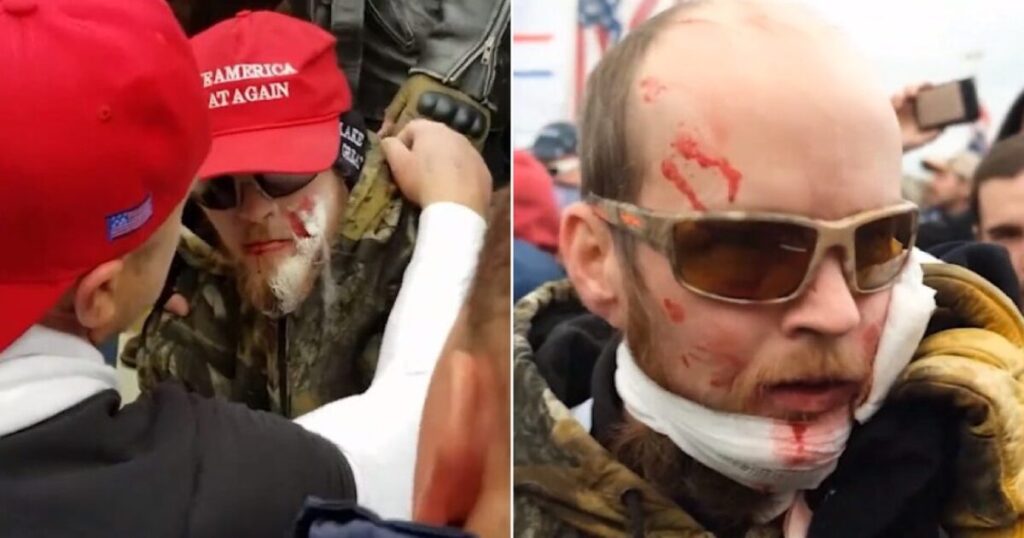On January 6, 2021, a significant and troubling event unfolded at the U.S. Capitol, leading to the shooting of several Trump supporters by Capitol Police. Newly released video footage has shed light on the actions of police officers, particularly Capitol Police Inspector Thomas Loyd Jr., who allegedly ordered the officers to fire rubber bullets at protesters without any warning. This incident has raised serious questions about the use of force by law enforcement during a politically charged demonstration. Investigation by David Sumrall, a private investigator, has revealed footage capturing these critical moments, which contradict previous narratives suggesting that the supporters were acting violently.
The video provides evidence that the Trump supporters involved in this confrontation were not engaging in any violent behavior at the moment they were shot. Instead, it shows that they were entirely unaware that police were about to unleash rubber bullets on them. Graphic images confirm that at least seven men were shot in the face and head, suffering serious injuries. The footage includes clear visuals of Loyd urging officers to take action against what was characterized as a peaceful gathering, further complicating the narrative surrounding the day’s events.
Eyewitness accounts and the footage paint a stark picture of the chaotic situation. The actions taken by Officer Loyd resulted in several individuals being hit, including one who had his hat knocked off and another whose face was struck just below his hat. The indiscriminate targeting, which included ricocheting bullets injuring multiple victims, paints a troubling image of police aggression. Joshua Black, one of the men struck, suffered severe facial injury and remains physically scarred as a result of the incident. These events raise questions about the appropriate use of force in managing crowds, especially when they appear to be non-threatening.
Additionally, the narrative surrounding these police actions has been scrutinized in public discourse. Despite the evident harm and chaos inflicted upon these individuals, Inspector Thomas Loyd has not faced accountability for the decisions that led to the shootings. On the contrary, he has been portrayed favorably by certain political factions and media outlets, raising concerns about systemic biases in how law enforcement actions are reported and which narratives are amplified publicly. This situation prompts calls for a re-examination of policing strategies, particularly in politically volatile situations.
The ramifications of the events of January 6 extend beyond individual injuries; they highlight broader issues related to law enforcement’s engagement with protesters. The incident has drawn comparisons to other significant instances of police violence in American history, suggesting a pattern of aggressive tactics used against specific demographics during protests. Critics argue that media coverage has largely ignored this dimension of the January 6 incident, thus potentially diminishing the public’s understanding of the scale and severity of police actions during that day.
Finally, there are broader implications for justice and accountability regarding law enforcement operations during civil unrest. With the emergence of various lawsuits, including one against Capitol Police by a protester claiming attempted murder, it is evident that the January 6 event continues to resonate in the legal and political arenas. As discussions unfold about pardoning those involved in the protest, advocates for justice argue that a focus on the victims of police violence should take precedence over discussions about pardoning protest participants. This ongoing controversy surrounding law enforcement and its response to peaceful demonstrations underscores the urgent need for reforms and collective introspection regarding accountability in policing practices.

